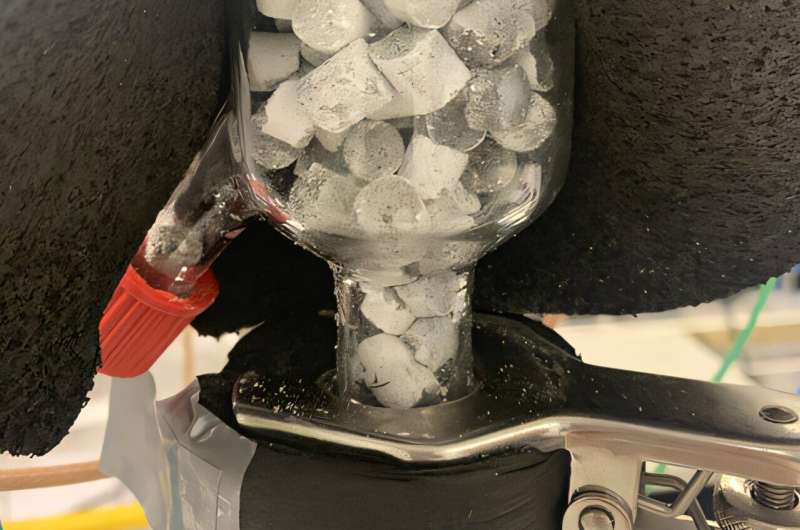New Technology Emerges to Heat Buildings Efficiently with Thermochemical Materials

A groundbreaking new technology has been developed by researchers at the U.S. Department of Energy's National Renewable Energy Laboratory (NREL) that uses thermochemical materials to heat indoor spaces, particularly in humid regions. The system, which integrates a thermal energy storage reactor into a building's HVAC system, is poised to revolutionize the way we think about heating buildings, reduce our reliance on non-renewable fuels, and lower carbon emissions.
The technology, known as open-cycle thermochemical energy storage (OCTES), utilizes salt-hydrate materials that release heat through hydration reactions when exposed to water vapor. This heat is then used to warm the building, and any excess energy can be stored and released later, reducing the load on the heating system and lowering energy costs.
According to Jason Woods, a senior research engineer at NREL's Advanced Building Equipment Research Group and co-author of the new paper on this topic, the key to successful integration lies in managing moisture levels within the building. "When you're working with water vapor, you have to think about where the moisture comes from," he explains. "If not managed properly, it can affect performance significantly."
The researchers tested their system in a range of climates and building types, including single-family homes, hotels, offices, and hospital patient rooms. Their findings suggest that the technology has great promise for applications worldwide, with varying levels of success depending on regional humidity patterns.
One notable result is that buildings located near major cities, such as Atlanta and New York, achieved higher thermal performance due to their higher humidity levels. Conversely, smaller cities like Minneapolis in Minnesota proved less conducive to OC-TES due to the dry air during winter months.
The system's ability to heat the building by 2°C above indoor temperature without exhausting moisture further underscores its value for energy efficiency. Moreover, integrating this with existing HVAC systems presents an opportunity to reduce capital costs and lower long-term expenses associated with heating and cooling homes and buildings.
In summary, researchers at NREL have made significant strides in developing a new thermal energy storage technology that utilizes thermochemical materials and has the potential to transform the way we heat our indoor spaces. More research is needed to quantify manufacturing, integration, packaging, and installation costs to achieve widespread commercialization.
By Sajad Ahmad
(This news story was written based on an article originally published at Science X in December 2023.)
